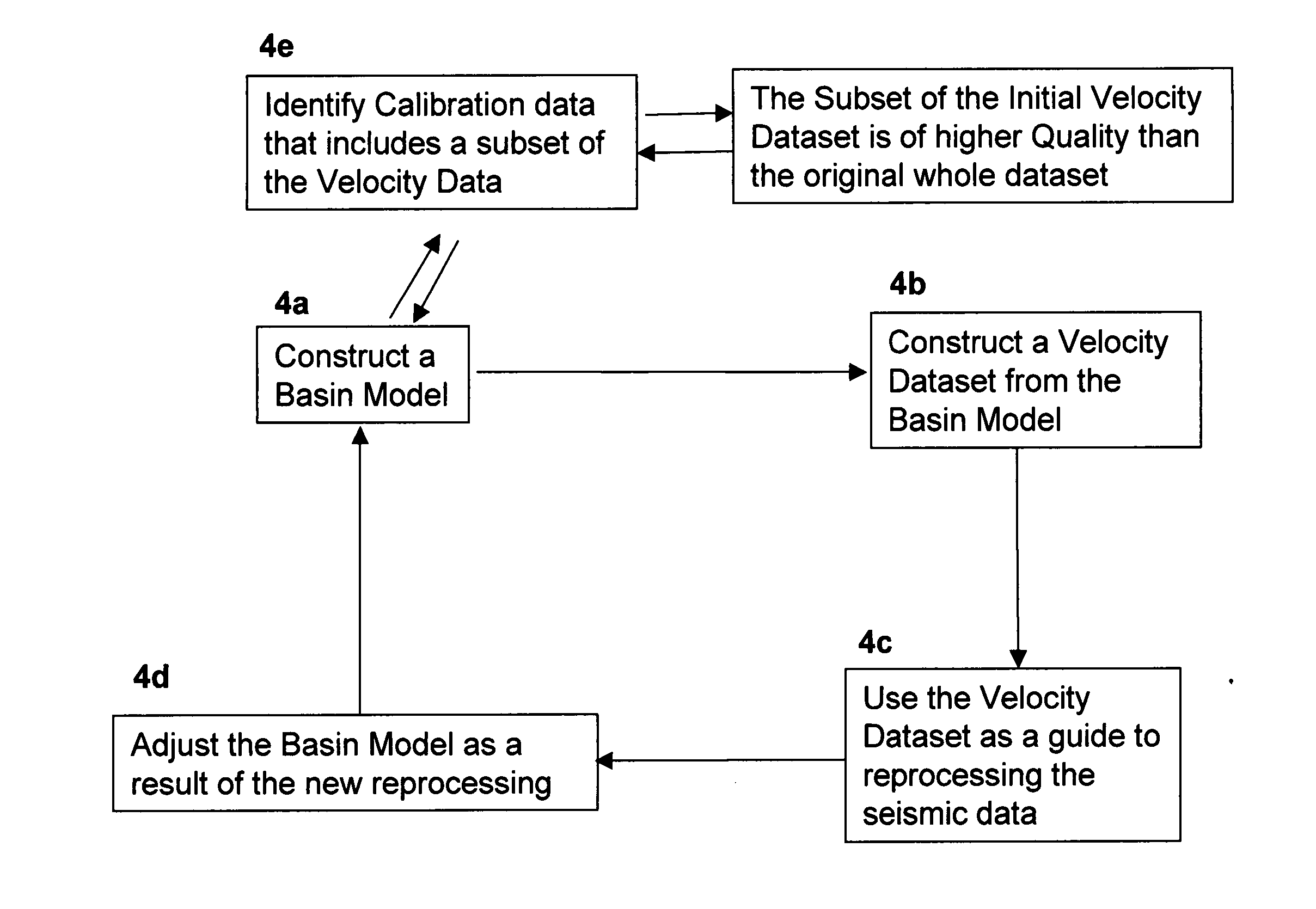Method and system for combining seismic data and basin modeling
- Summary
- Abstract
- Description
- Claims
- Application Information
AI Technical Summary
Benefits of technology
Problems solved by technology
Method used
Image
Examples
Embodiment Construction
[0017]FIG. 1 represents a simple embodiment of the current invention and is comprised of the following steps: (1a) construction of an initial basin model using at least some seismic data, (1b) construction of a velocity dataset from the basin model, and (1c) use of this velocity cube as a guide to re-picking the velocities that will be used for reprocessing the seismic data. Typically, at least some seismic data will be available for constructing the initial basin model. Preferably, the initial basin model is constructed from all initially available seismic and other input and calibration data. Most preferably, at least some of the initially available data is well control data. The initial basin model is preferably constructed using known methods and calibrated to all the known geologic, seismic and well data in the modeled area. The basin model is then used to construct a velocity volume. This velocity volume that can then be used as a guide to re-picking the initially solely seism...
PUM
 Login to View More
Login to View More Abstract
Description
Claims
Application Information
 Login to View More
Login to View More - R&D
- Intellectual Property
- Life Sciences
- Materials
- Tech Scout
- Unparalleled Data Quality
- Higher Quality Content
- 60% Fewer Hallucinations
Browse by: Latest US Patents, China's latest patents, Technical Efficacy Thesaurus, Application Domain, Technology Topic, Popular Technical Reports.
© 2025 PatSnap. All rights reserved.Legal|Privacy policy|Modern Slavery Act Transparency Statement|Sitemap|About US| Contact US: help@patsnap.com



